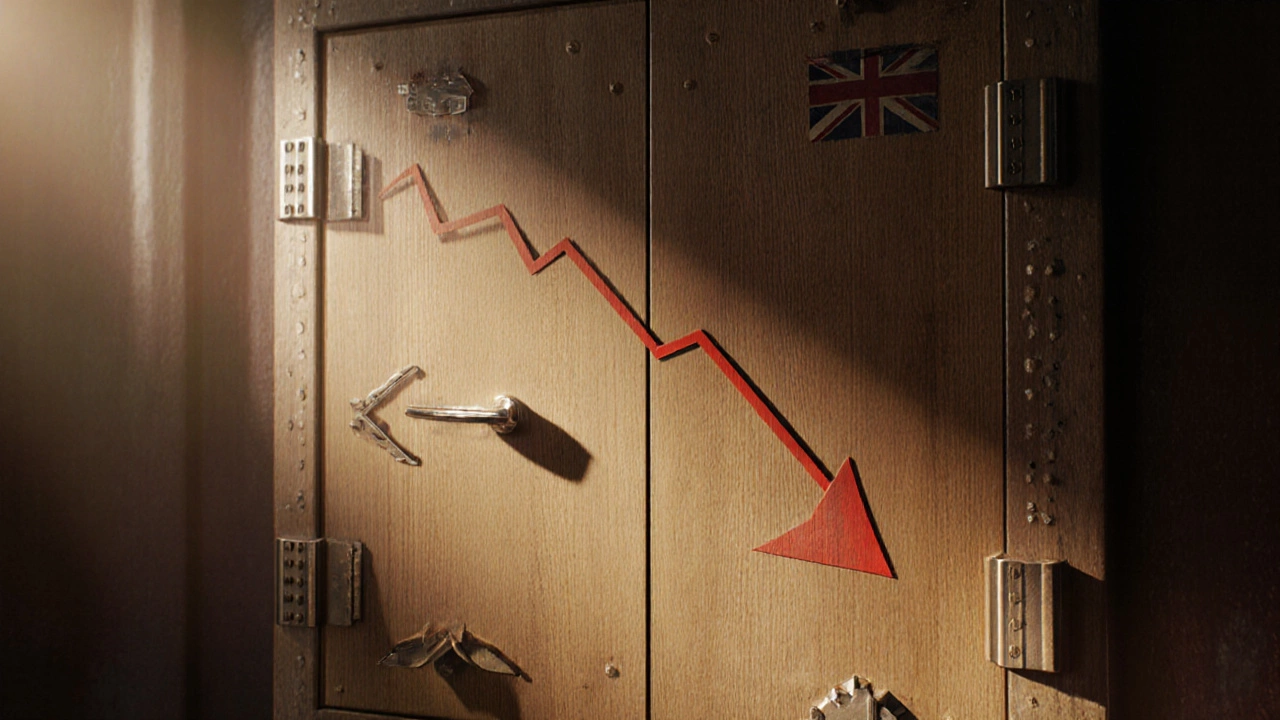Lose Money in an ISA: What’s Going Wrong and How to Fix It
When you hear about an ISA, a UK‑registered tax‑free savings vehicle for cash, stocks, or bonds. Also known as Individual Savings Account, it lets you keep earnings out of income tax and capital gains tax, the promise sounds simple: save, invest, and watch the money grow tax‑free. In reality, many savers end up lose money in ISA because they overlook three core factors: market risk, fees, and poor asset choice. Understanding how these pieces fit together is the first step to turning an underperforming ISA into a solid, tax‑efficient portfolio.
Tax‑efficient investing, strategies that minimise tax on returns while preserving growth potential is the backbone of any ISA plan. It isn’t just about the tax shelter; it’s about choosing investments that match your risk tolerance and time horizon. For example, holding high‑fee actively managed funds can erode gains faster than the tax savings ever help. Meanwhile, Risk management, the process of identifying, assessing, and mitigating financial risks determines whether market swings turn into losses or merely temporary dips. Ignoring risk management often leads to panic selling, which locks in losses and defeats the very purpose of a long‑term ISA.
Key Reasons You Might Lose Money in an ISA
First, market volatility plays a big role. If your ISA is loaded with equities and the stock market takes a downturn, the value of your holdings drops. That’s normal, but the problem shows up when you lack a diversified mix. Adding bonds, cash equivalents, or low‑correlation assets can smooth out the ups and downs, turning a volatile ride into a steadier journey.
Second, fees and charges secretly eat away at returns. Platform fees, fund management charges, and transaction costs may look small, but they compound over years. A fund with a 1% annual charge will shave off roughly 7% of your portfolio's growth over a ten‑year span, even before any market losses. Comparing cost structures across providers can reveal cheaper alternatives that keep more money working for you.
Third, poor fund selection often stems from chasing past performance. Just because a fund performed well last year doesn’t guarantee future success. Looking at long‑term consistency, underlying holdings, and the manager’s track record offers a clearer picture. Choosing a mix of broad market index funds and sector‑specific ETFs can provide balanced exposure without the hype.
Fourth, the withdrawal strategy matters. Early or unplanned withdrawals convert a tax‑free shelter into a taxable event, especially if the ISA contains cash that loses value through inflation. Setting clear goals—like a house deposit or retirement fund—and sticking to them prevents you from dipping into the ISA at the wrong time.
Finally, inflation can be a silent thief. Even if your ISA’s nominal value stays the same, its purchasing power may shrink. Investing in assets that historically outpace inflation, such as equities or real‑estate investment trusts, helps preserve the real value of your savings.
All these factors interlink: market volatility influences risk management decisions; fees affect investment performance; inflation pressures you to choose growth‑oriented assets. When you map them out, you see that losing money in an ISA isn’t random—it’s usually the result of a few avoidable missteps.
So, how do you protect yourself? Start with a clear risk profile. Ask yourself how much loss you could tolerate without panic. Use that answer to set a target asset allocation—perhaps 60% equities, 30% bonds, 10% cash for a moderate investor. Next, audit the fees you’re paying. Switch to low‑cost platforms or index funds where possible. Finally, adopt a disciplined contribution schedule, such as monthly deposits, to benefit from pound‑cost averaging, which spreads purchase price risk over time.
By treating your ISA as a living portfolio rather than a set‑and‑forget bucket, you’ll be able to spot early warning signs—rising fees, skewed asset mixes, or performance lagging behind benchmarks—and make timely adjustments. The result is a healthier, tax‑free savings vehicle that actually grows your wealth instead of eating it away.
Below you’ll find a curated collection of articles that dive deeper into each of these areas— from understanding loan interest rates that can affect your cash flow, to spotting crypto scams that might distract you from solid ISA investing. Use these resources to sharpen your strategy, avoid common pitfalls, and make the most of your tax‑free savings.

Explore why an ISA can lose value, the risks of cash, stocks & shares, and innovative finance ISAs, and learn practical steps to safeguard your tax‑free savings.
Read More